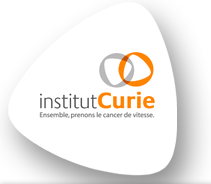In Vitro and In Vivo Analysis of the Gram-Negative Bacteria-Derived Riboflavin Precursor Derivatives Activating Mouse MAIT Cells.
Résumé
Mucosal-associated invariant T (MAIT) cells recognize microbial compounds presented by the MHC-related 1 (MR1) protein. Although riboflavin precursor derivatives from Gram-positive bacteria have been characterized, some level of ligand heterogeneity has been suggested through the analysis of the MAIT cell TCR repertoire in humans and differential reactivity of human MAIT cell clones according to the bacteria. In this study, using Gram-negative bacteria mutated for the riboflavin biosynthetic pathway, we show a strict correlation between the ability to synthesize the 5-amino-ribityl-uracil riboflavin precursor and to activate polyclonal and quasi-monoclonal mouse MAIT cells. To our knowledge, we show for the first time that the semipurified bacterial fraction and the synthetic ligand activate murine MAIT cells in vitro and in vivo. We describe new MR1 ligands that do not activate MAIT cells but compete with bacterial and synthetic compounds activating MAIT cells, providing the capacity to modulate MAIT cell activation. Through competition experiments, we show that the most active synthetic MAIT cell ligand displays the same functional avidity for MR1 as does the microbial compound. Altogether, these results show that most, if not all, MAIT cell ligands found in Escherichia coli are related to the riboflavin biosynthetic pathway and display very limited heterogeneity.
